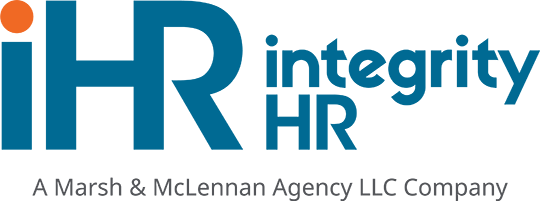In today’s rapidly changing business landscape, workforce planning has emerged as a critical strategy for organizations aiming to navigate the complexities of talent management and maintain a competitive edge. Workforce planning is the systematic process of analyzing, forecasting, and planning workforce supply and demand, assessing gaps, and determining targeted interventions to ensure an organization has the right people with the right skills at the right time and place. This article delves into the latest trends in workforce planning, outlines effective strategies, explains how to implement these strategies, and discusses the benefits of a robust workforce plan.
Latest Trends in Workforce Planning
- Data-Driven Decision Making: HR analytics and big data have transformed workforce planning into a precise and predictive science. Organizations now leverage data to forecast workforce requirements, identify skill gaps, and make informed hiring, training, and development decisions.
- Emphasis on Agility and Flexibility: The need for organizational agility has prompted companies to adopt more flexible and dynamic workforce planning approaches: creating fluid team structures, investing in cross-training, and utilizing contingent workers to respond swiftly to changing market demands.
- Focus on Skill and Competency Mapping: As job roles evolve due to technological advancements, there is a growing emphasis on mapping out skills and competencies required for the future. This trend has led organizations to prioritize skill development and upskilling initiatives in their workforce planning efforts.
- Integrating Diversity, Equity, and Inclusion (DEI): More organizations are beginning to recognize the importance of incorporating DEI principles into their workforce planning strategies. They are making proactive efforts to ensure a diverse talent pipeline and equitable opportunities for growth and development.
Workforce Planning Strategies
- Conducting a Workforce Analysis: The first step in workforce planning is conducting a thorough analysis of the current workforce, including skills inventory, performance levels, and potential retirements or departures. This analysis provides a baseline for understanding the gaps between the current state and future needs.
- Forecasting Future Workforce Requirements: This involves identifying the skills and roles the organization will need in the future, considering factors such as business growth, technological advancements, and market trends. Scenario planning can be beneficial in this stage, allowing organizations to prepare for future states.
- Developing Talent Management Strategies: Organizations must develop targeted talent management strategies based on gaps identified. Strategies may include recruitment plans for critical roles, training and upskilling programs for existing employees, and succession planning for key positions.
- Implementing Flexibility and Scalability: Building flexibility into the workforce plan allows an organization to adapt to unforeseen changes. Organizations can achieve this by using contingent workers strategically, developing a broad skill base among permanent employees, and creating scalable team structures.
Implementing Workforce Planning Strategies
- Engagement and Collaboration: Successful implementation requires engagement and collaboration across all levels of the organization; this includes securing buy-in from senior leadership, involving managers in planning for their teams, and engaging employees in their development plans.
- Utilizing Technology: Leveraging workforce planning tools and HR analytics platforms can streamline implementation. These technologies offer capabilities for data analysis, forecasting, and tracking the progress of workforce initiatives.
- Monitoring and Evaluation: Ongoing monitoring and evaluation are critical to ensure the effectiveness of workforce planning efforts; this involves regularly reviewing workforce metrics, assessing the impact of strategies, and adjusting as needed.
Benefits of a Robust Workforce Plan
- Alignment with Business Objectives: A well-executed workforce plan ensures that human resource capabilities align with the organization’s strategic objectives. This alignment enhances the organization’s ability to achieve its goals and respond to market opportunities.
- Improved Talent Readiness: Workforce planning helps organizations proactively manage talent risks, such as skill shortages and critical role vacancies. By anticipating future needs, companies can ensure they are ready to meet these challenges.
- Increased Operational Efficiency: Organizations can achieve greater operational efficiency by optimizing workforce allocation and enhancing employee capabilities; this includes reducing underutilization of staff, improving productivity, and minimizing the costs associated with turnover and recruitment.
- Enhanced Organizational Agility: Organizations can more easily adapt to change with a robust workforce plan. This agility is a critical competitive advantage in today’s fast-paced business environment, enabling companies to pivot quickly in response to new trends and disruptions.
Workforce planning is no longer a static HR function but a strategic imperative that drives organizational success. By embracing the latest trends, applying effective strategies, and ensuring thorough implementation and evaluation, organizations can build a workforce capable of shaping the future. The benefits of a robust workforce plan extend far beyond meeting immediate staffing needs; they lay the groundwork for sustained competitive advantage, operational excellence, and organizational resilience. As the business world continues to evolve, the importance of strategic workforce planning will only grow, making it essential for organizations to invest in these practices today to prepare for the challenges and opportunities of tomorrow.
Moving Forward
As organizations look to the future, continuous improvement in workforce planning processes will be critical; this includes staying abreast of emerging trends, such as the growing importance of artificial intelligence and machine learning in predictive analytics, the increasing focus on remote and hybrid work models, and the continuous shift towards a gig economy. Adapting workforce planning strategies to accommodate these trends will be essential for maintaining relevance and competitiveness.
Furthermore, the role of employee engagement and well-being as integral components of workforce planning will potentially increase. Organizations recognize that a motivated, healthy, and engaged workforce is the key to productivity and innovation. Thus, workforce planning strategies must incorporate elements that focus on employee experience, work-life balance, and career development opportunities to attract and retain top talent.
Recommendations for Success
- Stay Informed: Keep up with the latest trends and innovations in workforce planning and HR technology. This proactive approach will enable your organization to adapt its strategies promptly.
- Invest in Technology: Utilize advanced HR analytics and workforce planning tools to gain insights into your workforce and make data-driven decisions. The right technology can significantly enhance the efficiency and effectiveness of your planning efforts.
- Foster a Culture of Learning: Encourage a continuous learning environment within your organization. Upskilling and reskilling employees will contribute to employee satisfaction and retention.
- Emphasize Flexibility: Develop workforce strategies that prioritize flexibility to adapt to changes swiftly. These strategies include flexible work arrangements, fluid team structures, and a diverse talent pool.
- Prioritize Communication: Ensure clear and transparent communication throughout the workforce planning process. Keeping employees engaged during the planning process fosters a sense of ownership and alignment with organizational goals.
- Measure and Adjust: Regularly assess the outcomes of your workforce planning initiatives. Use metrics and feedback to refine your strategies and adjust to meet evolving business needs.
The complexities of the modern business environment demand a strategic and forward-thinking approach to workforce planning. By embracing current trends, implementing effective strategies, and adapting to changes, organizations can create a resilient and agile workforce capable of driving long-term success. The benefits of a robust workforce plan— from improved operational efficiency to enhanced organizational agility—underscore the critical role of workforce planning in achieving strategic business objectives. As we look to the future, the organizations that prioritize and excel in workforce planning will be those best positioned to thrive in an increasingly dynamic and competitive landscape.
Contact us today to learn more about how to improve your workforce planning strategies and results – https://integrityhr.com/get-your-free-hr-consultation/











